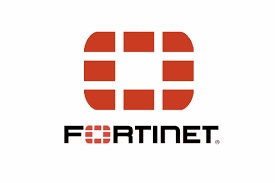December 21, 2020

In many ways, SD-WAN has come of age during the COVID-19 pandemic, supplying a safe and secure way for enterprise customers to keep their employees working and productive.
But with that opportunity also comes challenges, in adapting the technology to serve users anywhere flexibly and securely, be it in a traditional office or a home office. And even as vendors take advantage of the increased demand for SD-WAN, Fortinet also is looking at how the technology is evolving to serve the security-driven networking needs in a post-pandemic business world.
Enterprise customers today are looking to service providers' SD-WAN offerings as a means to improve the user experience and quickly adopt and deploy cloud services, all with reduced costs. Service providers, meanwhile, also want to improve the user experience – especially in this world of digital and cloud transformation. They also want to reduce cost and simplify operations.
SD-WAN can fit the bill for both, but how well it does so depends on the vendor. While many SD-WAN vendors came at the solution from the networking side, Fortinet from the beginning has emphasized security-driven networking, marrying the two as part of its Secure SD-WAN solution to serve enterprise as well as service provider customers. That secure networking focus is based on a solid SD-WAN networking stack, and on top of that it offers a rich API ecosystem that is often important for service providers and a "single pane of glass" control for centralized management.
With the onset of the COVID-19 pandemic, flexibility is becoming a more important part of the SD-WAN picture, as businesses now need connectivity for a much wider range of locations – a DSL-connected branch office, a fiber-fed cloud data center or a worker's home cable broadband service. In response, Fortinet supplies its service provider partners with a range of connectivity options, be it a small form-factor appliance with LTE for remote super-users or virtual deployments that can harness public cloud platforms including Amazon Web Services, Microsoft Azure and Google Cloud.
This trend toward more sophisticated multi-use cases has been accelerated by the pandemic, as SD-WAN its tasked to support not only Fortune 500 companies but also smaller businesses as well. Fortinet's Secure SD-WAN service is also well positioned to meet this need, able to scale from a handful of sites to more than 10,000. At the same time, it can accommodate customers with use cases where security is a primary concern, while for others, the focus is on cloud-based deployment or as complete, routing based architecture replacing an older, legacy system. Again, the common theme in the evolution of ubiquity, of all SD-WAN everywhere.
As part of this ubiquity, the user experience also comes into play in this multitenant SD-WAN world. It's not enough to supply a home worker access to enterprise applications; as is the case for Fortinet's Secure SD-WAN solution, the networking stack needs to be solid, able to deliver the video, voice, SaaS applications and provide a good user experience, to keep that worker productive.
In this this diverse, multitenant environment, SD-WAN increasingly has to be automation-based and self-healing. If SD-WAN is designed with a lot of automation, enterprise customers big or small don't have to worry about change, because once they configure the application policy, the environment runs smoothly. No matter what the underlying transport is, the enterprise or service provider customer has consistent application information that makes the overall SD-WAN experience superior.
To accomplish that, SD-WAN services must rely on application steering that taps into a rich array of application offerings to choose and create those kinds of policy structures. Such is the case for Fortinet's Secure SD-WAN offering, which offers more than 5,000 applications. An important detail that service providers and enterprises alike should look for is application steering done with deep SSL inspection, which provides application identification accuracy. Fortinet is the only Secure SD-WAN vendor to offer such capability.
Looking farther into the future, SD-WAN also is playing a role in the development of 5G wireless networks. And its self-healing capabilities also will expand, incorporating artificial intelligence to provide predictive analytics. In the larger software-defined branch, advancements in switches, network, and access control devices will increasingly tie them all together in a software-controlled environment.
If that future world sounds complex, it is. But there are clear signals that the corporate world will not return to business as usual prior to the pandemic; instead, it will continue to evolve toward a distributed, inter-connected and cloud-driven environment. So service providers, vendors and SD-WAN technology itself will have to adapt to fit the demands of this new business and networking environment. SD-WAN platforms will have to offer secure access in a range of tenant environments, manage thousands of cloud applications, deliver applications with a high-quality user experience and be self-healing, with automation and AI analytics to keep things running smoothly.
It’s a demanding present and future world – and a world where Fortinet is positioned to provide the flexibility, security and adaptability to make SD-WAN a better option for service providers and enterprise customers alike.
This content is sponsored by Fortinet.
Fortinet Inc.
You May Also Like









